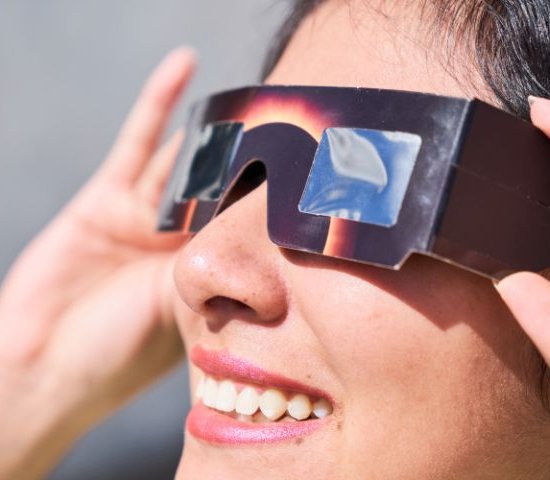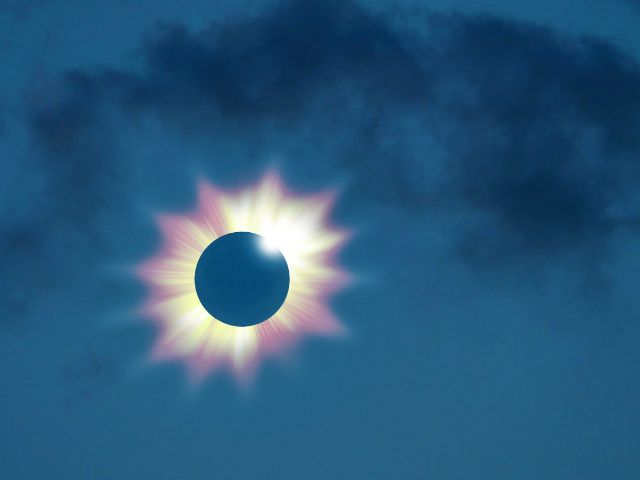
On March 29th, 2025, a partial solar eclipse will cross North America, giving people on the Atlantic seaboard and in northern Quebec, Canada, a once-in-a-lifetime opportunity to view this extraordinary celestial phenomenon.
This event also provides the perfect opportunity to provide hands-on, STEM-based educational programming to students located within the eclipse’s path.
With help from Alexandra Sines, an environmental educator and NEEF’s AmeriCorps VISTA member at Cuyahoga Valley National Park in Ohio, we have developed a handful of environmental education activities and resources focused on both scientific and cultural aspects of the eclipse for students in Grades K-6. These resources comply with current Next Generation Science Standards.
We encourage formal and informal educators, caregivers, and families with younger children to use these resources to help provide context for this amazing astronomical event through the lens of environmental education.

Solar Eclipse Observation Sheet
Have your students fill out these observation sheets before, during, and after the eclipse (make sure to review proper eclipse-viewing safety first!). Afterward, have them share their findings individually or as a group. What did they see? How did they feel? What was their favorite part? This can be used as a stepping stone to further discussions about the solar system and the effects of the Sun and Moon on the Earth.
Solar Eclipse Activity: Eclipse Myths Around the World
In this 40- to 55-minute activity, students will learn about the unique stories people in ancient cultures created to explain the phenomena of a solar eclipse, and then write their own myths based on those stories. It promotes creativity, empathy, and an appreciation of how these myths relate to our current understanding of natural phenomena. While this activity was created for the classroom, it can be adapted to fit any size group or other educational setting.
Additional Solar Eclipse Guidelines, Activities, and Resources
Explore these additional educational resources from our partners and other official organizations that you can use in the classroom or at home:
NASA 2024 Total Solar Eclipse Webpage and Mini-Lessons
NASA’s 2024 Total Solar Eclipse webpage includes interactive content about what total solar eclipses are, safety considerations when viewing the eclipse, and information about how to prepare to engage with the total solar eclipse on April 8. You can use a 3D visualization of the 2024 total eclipse to better understand the interaction of the objects in the solar system during the eclipse and the shadow of the Moon.
The five featured mini-lessons are geared primarily towards middle school students and include these topics: what is a solar eclipse, the difference between a solar and lunar eclipse, what is the sun’s corona, how a solar eclipse affects air temperature, and how different locations in the US will experience the 2024 solar eclipse. Each lesson takes approximately 30 minutes to complete and includes a PDF resource document and a Google Doc/Google Form student handout.
Smithsonian National Air and Space Museum: Exploring Solar Eclipses
The Smithsonian student activities page includes two options for making a solar eclipse model—an approach that uses a yardstick and modeling clay, and an approach for younger children that uses beach balls and a flashlight. The resources also include information about different types of eclipses, biographical information about a female astronomer who discovered what stars are made of, children’s book recommendations, and a shadow puppet craft activity.
Astronomical Society of the Pacific Eclipse Resources
The ASP Total Solar Eclipse resource page includes information, materials, links to resources, and support for educators to make their teaching opportunities accurate, safe, and fun. The ASP created the popular yardstick eclipse activity that educators can use to demonstrate how a lunar and a solar eclipse work. View a short video of ASP’s Vivian White walking through the demonstration and the activity guide.